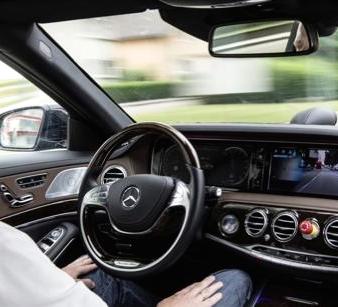Looking ahead in automotive UX with Mercedes

Steve Tengler recently sat down the user experience folks at Mercedes’ Research and Development Center in Sunnyvale, California, and interviewed Paolo Malabuyo (Vice President of Advanced UX Design), Vera Schmidt (Senior Manager of Advanced UX Design), and Viviane Eide (Manager of UX Research).
An excerpt:
With customers in the connected world being bombarded with nearly throwaway, evolving, mobile electronics, does that change your traditional advanced research development view from 10-12 years in advance to 2-3 years?
PAOLO: Seven years ago the iPhone didn’t exist, right? So I think it would be hubris for any of us to say we know exactly how things are going to turn out 12+ years in the future. But there are realities that we need to deal with that bridge the 2-to-12-year gap. One end of the spectrum is the supply chain necessary to support the creation of these amazingly complex things that require tens of thousands of parts that get sourced from raw materials, which require a kind of planning and institutional muscle memory that companies like Mercedes have. The opposite end of the spectrum—the tech sector—moves much faster and is an ecosystem with nearly zero risk aversion. For instance, you just had to restart your [phone’s] recording app. That’s a product that came about in that ecosystem. Can you imagine having to pull over and restart a Mercedes after a fifteen minute drive ‘cause, well, a few things just went wrong? Completely unacceptable. So it’s up to us to figure out where the right experience bar is, and then work with the people who are experts on moving things through this process, negotiating between them and the people saying, “OK, the future looks like
.” VERA: You can see really well that we are trying to bridge this gap with the Digital Car. We are looking really far ahead—sometimes 15 years or more. We are trying to envision our ideas. This is really important because the technology is going so fast that if you always think, “OK, next year it’ll be this technology,” or “In five years, it’ll be …†then you will always be behind something else instead of coming up with your own ideas. And the connected device really [enables that]. If you have ideas now and you want to bring it to the vehicle soon—not only in 10 years—we try to accomplish it with this team by taking advantage of mobile devices and connecting them to the car to bridge that gap.
VIVIANE: I think it helps—as we are confronted with the issue that technology moves at autobahn speed—if you think about it this way: we are ultimately designing for the user, and humans don’t change that quickly. Our core desires remain fairly stable. So if I had to predict what would be a core desire in 2020, people probably [still won’t] want to waste time in traffic. So we like to think about those human, core desires and how can we use technology to meet them. But one distinguishing factor, even if we are developing faster and [creating] apps, is that we do not release beta versions and test them in the market. That is obviously not acceptable in the automotive market for safety reasons.



